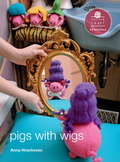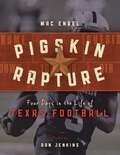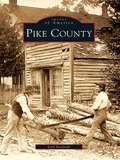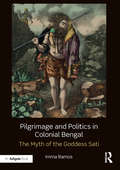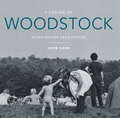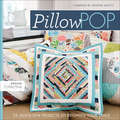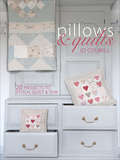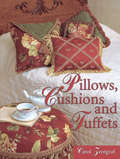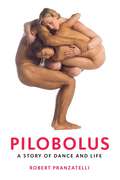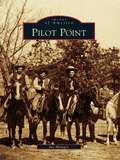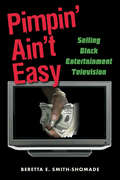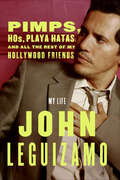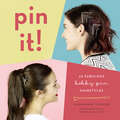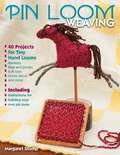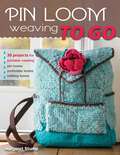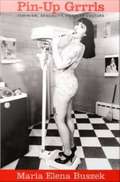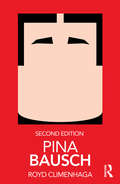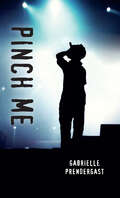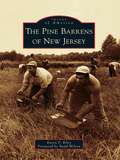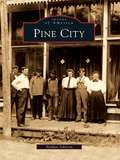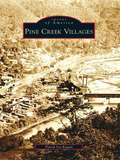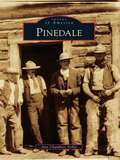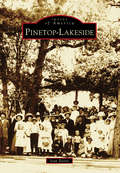- Table View
- List View
Pigs with Wigs: ePattern from Knitting Mochimochi (Potter Craft ePatterns)
by Anna HrachovecKnitting instructions.
Pigskin Rapture: Four Days in the Life of Texas Football
by Mac EngelIn a magical four-day period in autumn 2015, both of Texas&’s NFL teams played at home on different days, a major high school rivalry was set for Friday night in West Texas, and a fierce regional rivalry came to the Cotton Bowl on Saturday afternoon. Pigskin Rapture: Four Days in the Life of Texas Football captures not just the action on the field but, perhaps more importantly, the pageantry off the field as well: cheerleaders, tailgate parties, booster club rallies, homecoming coronations, skybox parties, the bar scene, and more. Sports journalist Mac Engel and photographer Ron Jenkins and his assistant Michael Ainsworth took the ultimate football road trip: from a Texan&’s game in Houston, to Odessa to cover Permian High School&’s homecoming game, then to Dallas take in Texas v. Oklahoma in the Cotton Bowl, followed by every Texan&’s Sunday ritual, the Dallas Cowboys at home against perhaps the best quarterback in a generation. Along the way the Pigskin Rapture team captures the sights, sounds, and smells of a state smitten with football, from K-D&’s Barbecue in Midland, to the rarefied air of Cowboys owner Jerry Jones&’s private box in AT & T Stadium. Here, too, are the more subtle and occasionally unseen manifestations of Texas football culture, such as a homeless man who resides on a practice field in Houston; the cavernous remains of the Astrodome; the proud high school where Andrew Luck played; the Australian woman who made the Cowboy&’s cheerleading squad, having never watched an NFL game; and the hangover a West Texas town continues to endure nearly three decades following the publication of Friday Night Lights.With hundreds of stunning full-color photographs and meticulous reporting on the games and events, this book provides both die-hard and casual football fans everything they need to feel part of the action!
Pike County
by Lori StreleckiFormed in 1814, Pike County was originally comprised of the townships of Middle Smithfield, Delaware, Upper Smithfield, Lackawaxen, and Palmyra. As years passed, other townships were added and some of the names changed, and today Pike County consists of 13 townships and boroughs. Even before Pike County was formed, the stories of the people, land, and events wove an intricate tale. The early daredevils who rafted lumber to Trenton and Philadelphia, using the Delaware River as their byway, were a rough?and?tumble bunch. As time went on, these mavericks gave way to new ones and the stories of entrepreneurs, trendsetters, great men and women, and fascinating events were etched into the county's history. Using vintage photographs from the Pike County Historical Society's archives, Pike County chronicles the people and stories that make this area unique.
Pilgrimage and Politics in Colonial Bengal: The Myth of the Goddess Sati
by Imma RamosFrom the late nineteenth century onwards the concept of Mother India assumed political significance in colonial Bengal. Reacting against British rule, Bengali writers and artists gendered the nation in literature and visual culture in order to inspire patriotism amongst the indigenous population. This book will examine the process by which the Hindu goddess Sati rose to sudden prominence as a personification of the subcontinent and an icon of heroic self-sacrifice. According to a myth of cosmic dismemberment, Sati’s body parts were scattered across South Asia and enshrined as Shakti Pithas, or Seats of Power. These sacred sites were re-imagined as the fragmented body of the motherland in crisis that could provide the basis for an emergent territorial consciousness. The most potent sites were located in eastern India, Kalighat and Tarapith in Bengal, and Kamakhya in Assam. By examining Bengali and colonial responses to these temples and the ritual traditions associated with them, including Tantra and image worship, this book will provide the first comprehensive study of this ancient network of pilgrimage sites in an art historical and political context.
Pilgrims of Woodstock: Never-Before-Seen Photos
by John KaneIntimate portraits by photojournalist Richard F. Bellak of the musical festival&’s counterculture attendees celebrating peace, love, and rock and roll. In the summer of 1969, 400,000 people from across the country came together and redefined the music scene forever. Though the legacy and lore of Woodstock lives on in the memory of its attendees, a new generation can experience the real and unedited festival through Richard Bellak&’s never-before-seen photographs and John Kane&’s incredible new interviews.Pilgrims of Woodstock offers a vivid and intimate portrait of the overlooked stars of the festival: the everyday people who made Woodstock unforgettable. The photographs and interviews capture attendees&’ profound personal moments across hundreds of acres of farmland, as they meditated, played music, cooked food at night, and congregated around campfires. For three days, they helped and relied on each other in peace and harmony. For most, it was a life-changing event. Now, after the 50th anniversary of the famed festival, relive their experiences firsthand in Pilgrims of Woodstock.
Pillow Pop: 25 Quick-Sew Projects to Brighten Your Space
by Heather Bostic&“Filled to the brim with 25 quick-to-make pillows from some of today&’s hottest designers . . . A pillow is a great place to expand your skill and have some fun.&” —McCall&’s Quilting This installment of the Design Collective series is stuffed full of pillows! Make a distinctive statement with eye-catching modern designs—choose from twenty-five different 18" to 20" square pillow projects to decorate your home. Pull out your favorite fabrics and have fun stitching up something new to adorn your bed or favorite chair. Popular blogger and modern sewist Heather Bostic brings you a sensational selection of pillow projects. Try different techniques like paper-piecing, quilting, embroidery, and appliqué. More than twenty designers with fresh, contemporary style offer something for everyone at any skill level.
Pillows & Quilts: 20 Projects to Stitch, Quilt & Sew
by Jo ColwillJo Colwill taught Kirstie Allsopp to create one of her beautiful cushion designs on Kirstie's Handmade Britain, and now she can teach you too! This gorgeous collection of cushion and quilt projects are all inspired by Jo Colwill's life on her Cornish farm. Learn how to sew with step-by-step instructions, detailed diagrams and clever tips and tricks. For most of the projects, patchwork is combined with applique and hand embroidery, and the sewing techniques are clearly described to help you to achieve professional results. There's a wide range of designs to suit everyone, whether you're a beginner looking for a quick and simple cushion project or an experienced quilter wanting more of a challenge. You can make the projects just as they are or modify the ideas to create your own individual style. The book also includes a full-size quilt pattern for the featured Advent Quilt design.
Pillows, Cushions and Tuffets
by Carol ZentgrafOver 50 pillow, tuffet, and cushion projects Clear, easy, step-by-step directions and abundant photographs Great tips on fabric selection, assembly, and sewing techniques Much of the fun of decorating is mixing and matching fabrics to create an inviting ensemble, and you'll find plenty of ideas in Pillows, Cushions, Tuffets. Author Carol Zentgraf shows you how to choose the fabrics and embellishments to create dozens of pillows, cushions, and tuffets - from funky to upscale designs. Inside, you'll learn all the sewing techniques and trade secrets to create gorgeous accessories for every room in your home.
Pilobolus: A Story of Dance and Life
by Robert PranzatelliThe dynamic history of the innovative, beloved, and critically acclaimed dance theater company, with revelatory behind-the-scenes details of its creators and significant works The ingeniously innovative and enduringly popular American dance theatre company Pilobolus has helped redefine, remix, and rejuvenate the essence of dance with its eclectic sensibility and daring athleticism. Now, for the first time, the story of Pilobolus, from its counterculture origins through its pop-culture triumphs and contemporary global acclaim, is revealed in a book that will entrance longtime admirers and newcomers alike. Written with unprecedented access to the company—with insights from unpublished archival materials and interviews with its founders, dancers, and current artistic directors—and featuring both classic and never-before-seen photos, Pilobolus offers previously untold details about the group’s history and the creation of its most significant works. Robert Pranzatelli describes the company's genesis in a Dartmouth dance class in 1971 and how Pilobolus revolutionized dance with its blend of sensuality, physical achievement, and visual wit. In these pages, the troupe performs on Broadway, travels the world, and by the late 1980s secures a place in dance history, while its growth is marked by periods of internal conflict, challenges, and change. As Pilobolus continues to morph, invent, and thrive with the arrival of new artists and collaborators, its story encompasses love, loss, grief, and rebirth, as well as insights into the secrets of the creative process—how performers and choreographers think and work. More than a history, Pilobolus is a narrative of life and art, and the vitality that infuses and inspires both when they align and inhabit each other.
Pilot Point (Images of America)
by Jay MeluginThe oldest town in Denton County, Pilot Point is situated atop the highest point in North Texas at a place that was once a landmark for wagon train pilots traveling through the region. In 1854, the town was platted and lots were sold, many to cross-country pioneers who were drawn to the abundance of fresh water, game, and fertile soil. The city began to grow more quickly after incorporation in 1867, and when the railroad arrived in 1880, Pilot Point became one of the busiest trading centers in North Texas, boasting both the largest cotton gin and university. From the early days of cowboys and cotton in the 1800s, to oil and cattle in the 1930s, to the changes that came with the 1960s, this new volume tells the unique story of Pilot Point.
Pimpin' Ain't Easy: Selling Black Entertainment Television
by Beretta E. Smith-ShomadeLaunched in 1980, cable network Black Entertainment Television (BET) has helped make blackness visible and profitable at levels never seen prior in the TV industry. In 2000, BET was sold by founder Robert L. Johnson, a former cable lobbyist, to media giant Viacom for 2.33 billion dollars. This book explores the legacy of BET: what the network has provided to the larger US television economy, and, more specifically, to its target African-American demographic. The book examines whether the company has fulfilled its stated goals and implied obligation to African-American communities. Has it changed the way African-Americans see themselves and the way others see them? Does the financial success of the network - secured in large part via the proliferation of images deemed offensive and problematic by many black communities - come at the expense of its African-American audience? This book fills a major gap in black television scholarship and should find a sizeable audience in both media studies and African-American studies.
Pimps, Hos, Playa Hatas, and All the Rest of My Hollywood Friends: My Life
by John LeguizamoFans of John Leguizamo's smash-hit one-man shows (Mambo Mouth, Spic-o-rama, Freak, and Sexaholix) have already gotten a glimpse into his life, but this book tells the whole story, carrying readers along on a wild journey from his childhood in Queens to his current home at the top of the Hollywood pyramid. An acclaimed director, producer, and play-wright, and one of the highest-paid Latin actors in the world, Leguizamo shares the stories behind his many roles—what inspired them and what transpired as he created them—while dishing on his personal relationships with his family, friends, and celebrity colleagues. Here is both an intimate self-portrait and a unique behind-the-scenes look at the magic and chaos of stardom, a keenly intelligent and insanely funny book that celebrates a remarkably talented artist's greatest achievement: growing up Latino in America and succeeding on his own terms.
Pin It!: 20 Fabulous Bobby Pin Hairstyles
by Annamarie TendlerBrightly colored pins styled into fun patterns and designs are the hottest new trend in hairstyling, and Pin It! gives short- and long-haired fashionistas the know-how to create 20 colorful bobby pin hairstyles for everything from an afternoon trip to the mall to an elegant party. Step-by-step photos make it easy for anyone to follow along, and the unique looks appeal to trendy teens and stylish young women as well as parents looking for a wholesome hair-styling book with fresh-faced appeal. With style tips to pull it all together and five DIY projects for personalizing bright and sparkly pins, this is the new must-have beauty book.
Pin Loom Weaving
by Margaret StumpTiny palm-sized pin looms are making a comeback. Here is the perfect book to get started with this intriguing weaving technique.
Pin Loom Weaving to Go: 30 Projects for Portable Weaving
by Margaret StumpStep-by-step instructions for 25 projects you&’ll be amazed were made from pin loom weavings!Pin looms are hot! These palm-sized weaving looms go anywhere and make just about anything you can imagine, from fashionable wrist cuffs to full-sized blankets. Just drop a pin loom in your project bag with a ball of yarn and you are on your way to fast, fun weaving.Margaret Stump, author of the original Pin Loom Weaving, has outdone herself with the 25 designs in this new book. There are elegant wraps, a fun fox bag, an American flag blanket, pillows, pins, stylish scarves, and more--all in a modern style that says "hand crafted with pride."With beginning weavers in mind, Margaret first walks you through how to weave on a 2" and 4" loom. Once you know how to make a basic square and connect your pieces, you are well on your way to making any of the projects in this book. The book divides projects into those that use a 2", 4", adjustable fine-gauge, and even a pot holder loom, and those that combine pieces from different looms, so it is easy to find a project and get started. Pin looms are readily available in a variety of sizes and materials. Choose a favorite pattern and a suitable pin loom, and start weaving anywhere and everywhere today!• All the basics of pin loom weaving and more than 30 beginning and medium level projects you can make on the go• Simple weaving techniques for portable looms• Instructions for making your own simple 2" loom• Projects for standard 2" and 4" looms, as well as weaving on potholder looms and knitting looms
Pin-Up Grrrls: Feminism, Sexuality, Popular Culture
by Maria Elena BuszekSubverting stereotypical images of women, a new generation of feminist artists is remaking the pin-up, much as Annie Sprinkle, Cindy Sherman, and others did in the 1970s and 1980s. As shocking as contemporary feminist pin-ups are intended to be, perhaps more surprising is that the pin-up has been appropriated by women for their own empowerment since its inception more than a century ago. Pin-Up Grrrls tells the history of the pin-up from its birth, revealing how its development is intimately connected to the history of feminism. Maria Elena Buszek documents the genre's 150-year history with more than 100 illustrations, many never before published. Beginning with the pin-up's origins in mid-nineteenth-century carte-de-visite photographs of burlesque performers, Buszek explores how female sex symbols, including Adah Isaacs Menken and Lydia Thompson, fought to exert control over their own images. Buszek analyzes the evolution of the pin-up through the advent of the New Woman, the suffrage movement, fanzine photographs of early film stars, the Varga Girl illustrations that appeared in Esquire during World War II, the early years of Playboy magazine, and the recent revival of the genre in appropriations by third-wave feminist artists. A fascinating combination of art history and cultural history, Pin-Up Grrrls is the story of how women have publicly defined and represented their sexuality since the 1860s.
Pina Bausch: The Making Of Tanztheater (Routledge Performance Practitioners)
by Royd ClimenhagaThis newly-updated second edition explores Pina Bausch’s work and methods by combining interviews, first-hand accounts, and practical exercises from her developmental process for students of both dance and theatre. This comprehensive overview of her work offers new and exciting insight into the theatrical approach of a singular performance practitioner. This is an essential introduction to the life and work of one of the most significant choreographers/directors of the twentieth and twenty-first centuries. As a first step towards critical understanding, and as an initial exploration before going on to further, primary research, Routledge Performance Practitioners offer unbeatable value for today’s student.
Pina Bausch’s Aggressive Tenderness: Repurposing Theater through Dance
by Telory D. ArendellPina Bausch’s Aggressive Tenderness: Repurposing Theater through Dance maps Bausch’s pieces alongside methodologies of key theater and film practitioners. This book includes discussion of a variety of Bausch pieces, including Sacre du Printemps (Rite of Spring 1975), Kontakthof (Meeting Place 1978), Café Müller (Café Mueller 1978), Nelken (Carnations 1982), Arien (Arias 1985), and Vollmond (Full Moon 2006). Beginning with her approach as one avenue of dance dramaturgy, the author connects the content expressed in these pieces with theoretical conversations, works from other artists inspired by Bausch, and her own experiences, providing an examination that is both academic and personally insightful. Arendell reads all of these theatrical and film approaches into Bausch’s work to highlight how the time frame involves a cross-pollination between Bausch and the other artists that looks both backward and forward in its influences. Ideal for students of dance and theater, Pina Bausch’s Aggressive Tenderness shows how Bausch’s Tanztheater speaks a kinaesthetic language, one that Arendell translates into a somaesthetic exploration to pair a repurposed body ethic with movements that present new forms of embodiment.
Pinch Me (Orca Soundings)
by Gabrielle PrendergastAfter another night of girls, music and booze, seventeen-year-old pop star Darius Zaire falls out of bed and lands on the cruddy floor of his old bedroom. No mansion, no luxury cars, no platinum records. Now he's just ordinary Darren Zegers. Some kind of nightmare has erased everything that happened to change Darren the dweeb into Darius the multimillionaire. Now Darius has to face an ordinary day in the twelfth grade, suffering through remedial English and wondering what happened to the last three years, let alone all his fans and money. He desperately wants to return to his old life, but he is starting to worry that maybe this is reality, and it was his other life that was the dream. This short novel is a high-interest, low-reading level book for teen readers who are building reading skills, want a quick read or say they don’t like to read!
Pine Barrens of New Jersey, The
by Budd Wilson Karen F. RileyThe Pine Barrens of New Jersey cover 22 percent of the most densely populated state in the country. It is the largest stretch of open space between Boston, Massachusetts, and Richmond, Virginia. It reaches across 56 municipalities and 7 counties. The name came from early settlers who thought the area was a vast wasteland, but it is anything but barren. Underneath this incredible natural resource lies almost 17 trillion gallons of some of the purest water on earth. Stands of pitch pine gave birth to the charcoal industry, and its acidic swamps were used first for bog iron and later for cranberry production. Many firsts came from this area, including cranberry sauce, cultivated blueberries, and grape juice. Numerous industries have risen and fallen over time. Remnants of forgotten ghost towns bear witness to that history, but the real stories come from the people who lived and worked there.
Pine City
by Nathan JohnsonLaden with pines and interspersed with lakes and rivers, Pine City has long served as the gateway to Minnesota's Northwoods. Over the years, people have traveled through the area via the river, military road, railroads, and scenic highway. In the 1880s, as people of European decent were settling in, the crux of the community moved from Chengwatana, Ojibwe for "City of Pines," to a location west of there, nearer the rail line, called Pine City. The story begins with the fur trade and takes one through a fascinating journey of the logging industry, showing the rural community's transition from predominantly agricultural underpinnings to a more diversified economy. This collection of vintage photographs highlights Pine City's laboring people and other influences that have had roles in shaping what it is today-a city of great history, unique people, nostalgic small-town traditions, and mystifying legends.
Pine Creek Villages (Images of America)
by David Ira KaganPioneer settlers began arriving in Pine Creek Valley after the Revolutionary War, drawn to the pristine wilderness filled with towering white pines and hemlocks. In the 1880s, descendants of those settlers began extensive lumbering operations aided greatly by the arrival of the railroad through the valley. Additional logging railroads were rapidly constructed up the tributary runs to the great stands of trees. Pine Creek's villages flourished, with both large and small sawmills buzzing. Around 1910, when the great lumbering days ended, many of the village populations plummeted. Throughout the 20th century and into today, the area remains a popular tourist destination for fishing, hunting, and outdoor enthusiasts.
Pinecone Quilts: Keeping Tradition Alive, Learn to Make Your Own Heirloom
by Betty Ford-SmithDiscover the rich history of Pinecone quilts, try your hand at five stunning projects with helpful tips, and learn how to create your own quilt. Pinecone quilts, also known as Pine Burr, are made with folded triangles sewn side-by-side onto a foundation in concentric circles. Educator and quilter Betty Ford-Smith keeps the tradition of pinecone quilts alive by passing on the rich history of the Pinecone quilt and detailed instructions on creating your pinecone quilt. She shares her knowledge of Pine Cone quilting mastery and even some of her beloved teacher, Miss Sue, life&’s anecdotes and cautionary tales given to her during their quilting lessons together. · Make five home decor projects with helpful tips to assist along the way · Learn the origins and inspirations of Pinecone quilts and their place in Southern and African American history Browse through a gallery of student and author-made quilts and resources for learning more about African influences on Southern art
Pinedale
by Ann Chambers NobleJohn F. Patterson founded Pinedale in 1904 after proposing the establishment of a town along Pine Creek in western Wyoming. Patterson offered to build and stock a general store if local ranchers Charles Petersen and Robert Graham would donate five acres each for the site. Petersen and Graham agreed to this plan, a surveyor was hired, and Pinedale--named after the post office on Petersen's ranch--was officially established. Free town lots were offered to early settlers, and Pinedale was incorporated in 1912, becoming the farthest incorporated town from a railroad, and later from a major highway, in the country. The community survived in fierce isolation, and the townspeople originally made their living supplying the ranchers, outfitters, and tie hacks. Ranching and tourism helped sustain Pinedale from the beginning, and in the 1990s, the community underwent a fundamental change with the introduction of natural-gas mining in the area. Pinedale residents continue to live and thrive on this harsh but beautiful land.
Pinetop-Lakeside
by Joan BaezaIn 1984, the White Mountain communities of Pinetop and Lakeside in east-central Arizona undertook a "marriage of convenience" and incorporated. Historically, they could not be more different. Like rival sisters, one was pious and churchgoing while the other was wayward and fun loving. But in the best of American traditions, they formed a town government to provide services for their combined residents. Pinetop-Lakeside's history is as rough-and-tumble as that of any Western town. Settlement began with the establishment of Fort Apache in 1871. The cavalry post provided employment for freighters and skilled laborers, as well as a market for beef, hay, and grain. The 1880s brought colonists from the Church of Jesus Christ of Latter-day Saints. They built the dams and lakes that in the next century would become the basis for an economy based on outdoor recreational tourism. Today, Pinetop-Lakeside is a thriving community of approximately 4,500 residents. One thing that hasn't changed since the time of the pioneers is the natural beauty that defines life on the mountain.
